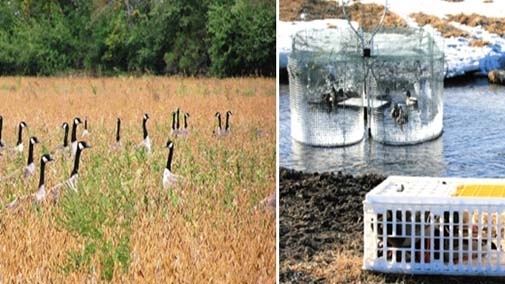NWRC Research Areas: Agricultural Food Security and Safety

Our scientists are developing methods to evaluate and mitigate the impacts of wildlife-associated pathogens affecting agricultural health, food security and food safety.
The fastest growing threats to agricultural and human health, both from direct routes of infection of livestock, poultry, and humans, and indirect routes by entering the food chain through the wildlife-agricultural interface. These indirect routes threaten both food security (access to sufficient food for an active, healthy life) and food safety ( the scientific discipline of producing, handling, and preparing food that prevents contamination and food borne). Examples of wildlife-associated pathogens affecting food security and safety include:
Avian influenza viruses (AIV) that can spill-over into poultry operations and become highly pathogenic with large economic consequences in terms of poultry losses and embargoes on poultry products;
Pathogenic bacteria that can be carried and transmitted by wildlife to agricultural operations causing morbidity in livestock and subsequent illness in humans further along the food chain; and
Antimicrobial-resistant bacteria that have increased dramatically in both agricultural operations and human health facilities where their effects can range from morbidity-related losses of livestock production to increases in untreatable illness in humans.
In addition, emerging novel pathogens and novel strains of existing pathogens have increased substantially in the U.S. and overseas and pose an unknown threat to agricultural and human health in the U.S. Having foundational knowledge to deal with these pathogens should they enter the U.S. will provide a proactive approach to mitigate their spread and limit effects in the U.S.
Publications
Contact Us
Agricultural Food Security and Safety
Alan Franklin, Project Leader
Email: alan.b.franklin@usda.gov
Phone: 970-266-6137
4101 LaPorte Avenue
Fort Collins, Colorado 80521
Carter Hranac, Biologist
Scott Goetz, Biologist

